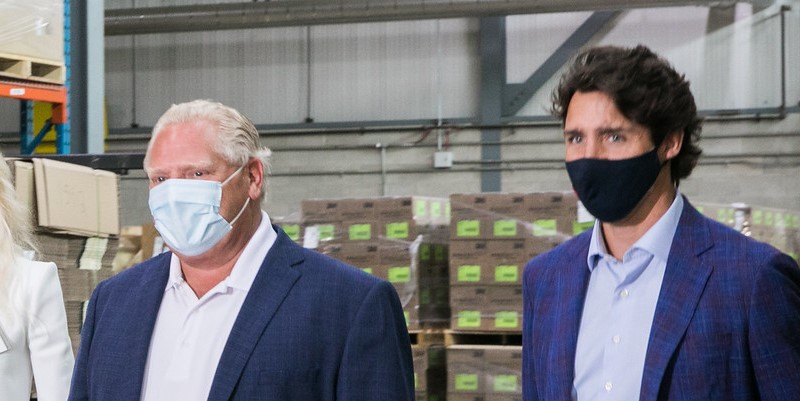Governments in Canada did not ‘follow the science’ during COVID

In winter 2020, as the pandemic spread, many Canadians donned face masks believing they would offer protection from COVID-19. They also followed the guidance of health authorities to “socially distance” themselves, “stay home, stay safe,” to lockdown “non-vital” businesses, to limit public assembly, to close schools, parks, beaches, and outdoor recreational and exercise venues. In clinical speak, these unprecedented measures are known as “non-pharmaceutical interventions” or NPIs.
Why did so many Canadians submit themselves so willingly to NPIs? Because public health authorities said these things would keep them safe, and were backed by science. But did our public health authorities actually follow the science? Or did they essentially make it up?
Let’s look at face masks, which today are still worn by some Canadians in both institutional health settings and among the fearful at the grocery store. The Cochrane Library, the world’s leading institution of systematic reviews of health literature, actually looked at the mask question twice—once in 2020 and again in 2023.
In 2020, researchers found 67 studies that met adequate quality standards and concluded that the “pooled results of randomized trials did not show a clear reduction in respiratory viral infection with the use of medical/surgical masks during seasonal influenza.” They further found “no clear differences between the use of medical/surgical masks compared with N95/P2 respirators in healthcare workers when used in routine care to reduce respiratory viral infection.” In 2023, the literature base had expanded to 78 randomized controlled trials yet still did not show a clear reduction in respiratory viral infection with the use of medical/surgical masks, and still found no indication of N95 masks having greater effectiveness.
Clearly, our public health authorities and politicians were not “following the science” on masks. And the same is true of several other (possibly all) NPIs including compulsive handwashing, business closures, school closures, self-isolation—the whole sorry 2020 public health playbook. And yet, nothing has been done to assure Canadians that our institutions and authorities will do better during the next crisis or flu season. No admissions have been made, no consequences imposed, no compensation granted to victims of the scientific misinformation peddled by government authorities.
And people have noticed. A 2022 public opinion survey of Canadians suggests public trust in our institutions “cratered” during the pandemic (2020-2022), falling from 40 per cent of respondents proclaiming trust in government institutions to only 22 per cent in 2022. That percentage has climbed in 2023, as COVID recedes as a fear for many people, but still only 37 per cent of Canadians trust government to be competent and effective.
Public trust in Canada’s “science-driven” health, safety and environmental institutions is critical to Canada’s future ability to weather crises in these policy domains, and needs to be higher than a mere 37 per cent if government expects broad compliance with guidance in future crises. Governments across Canada, including the Trudeau government, should take the necessary steps to restore public trust. Creating a “truth and reconciliation” process for Canada’s public health agencies and authorities would be a good place to start.
Author:
Subscribe to the Fraser Institute
Get the latest news from the Fraser Institute on the latest research studies, news and events.

